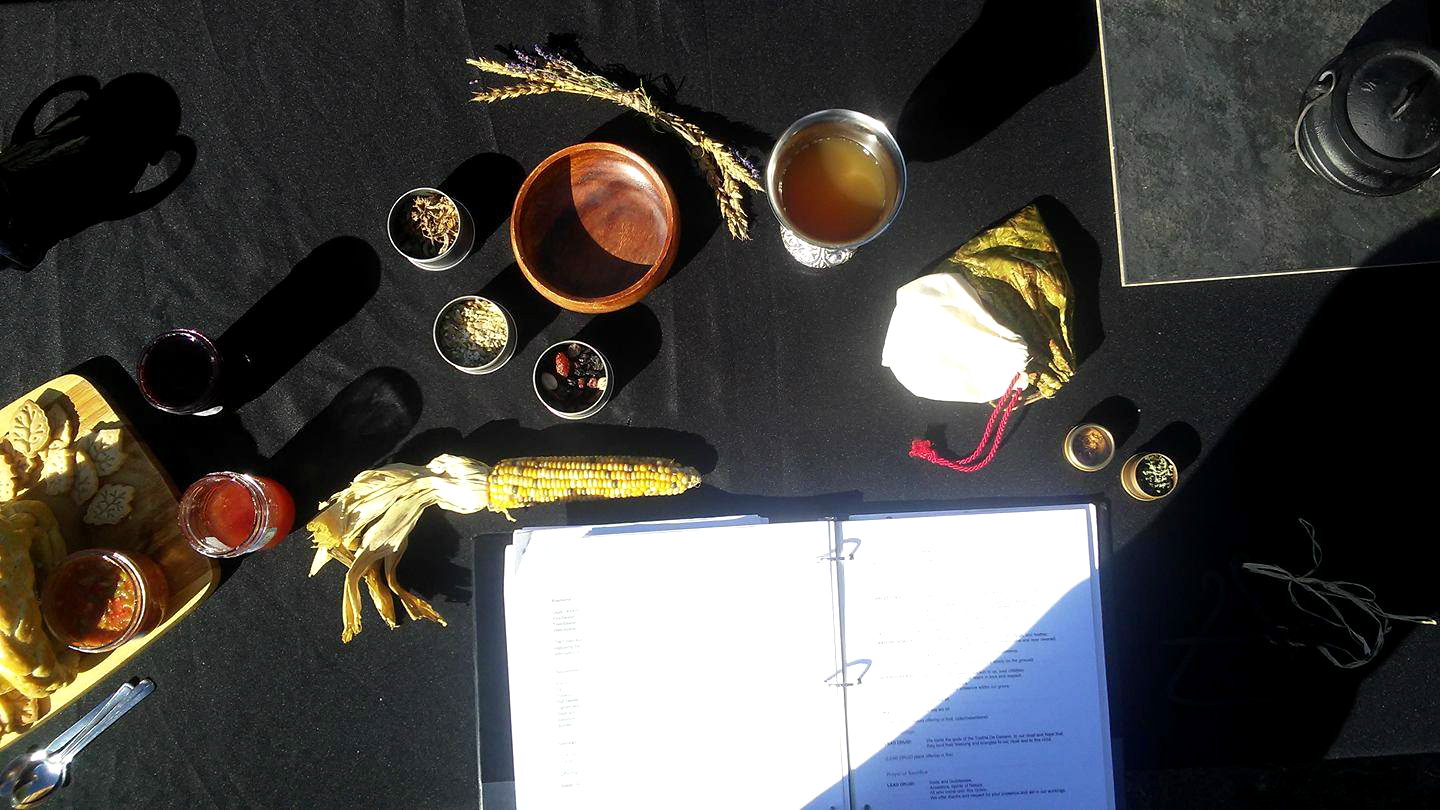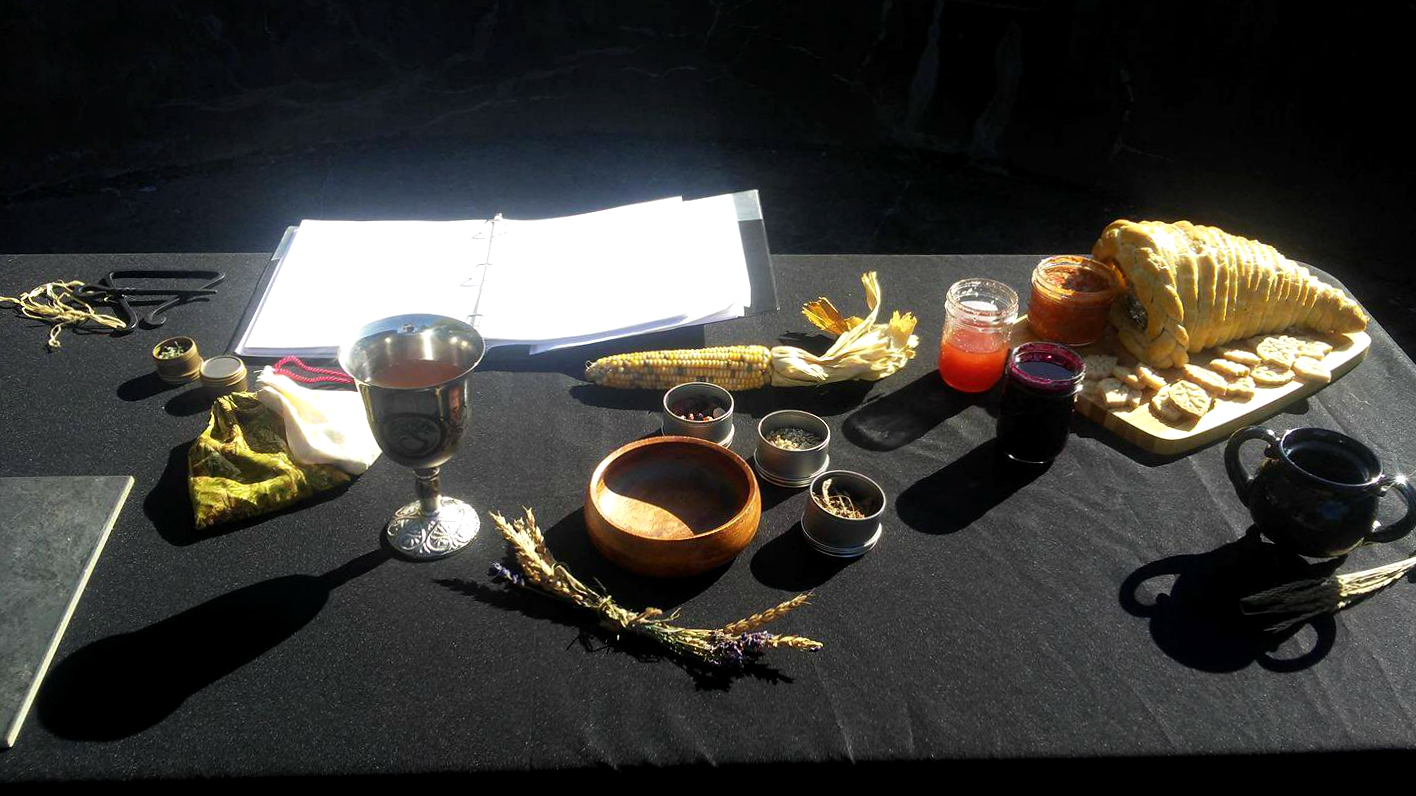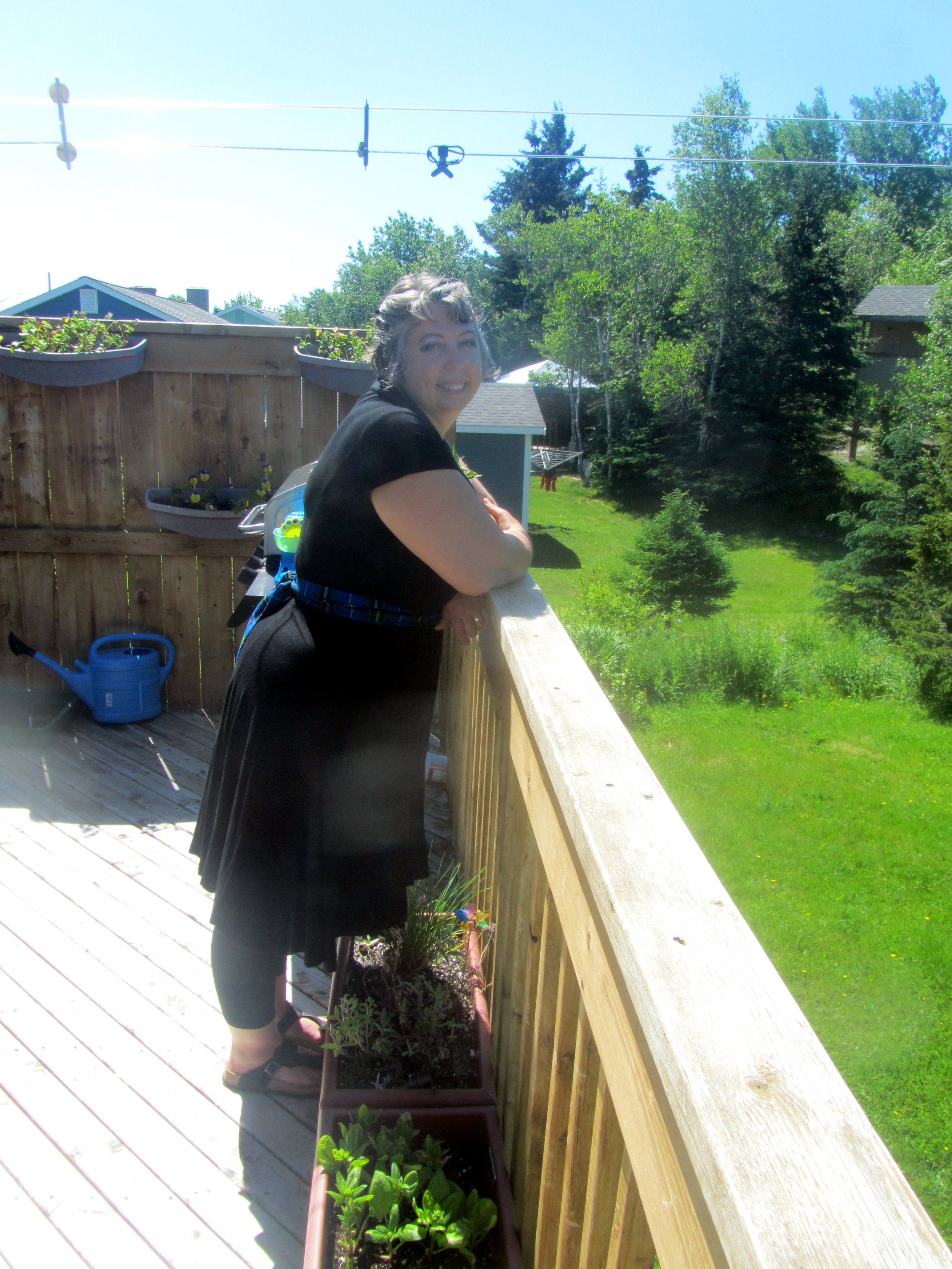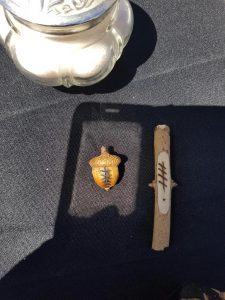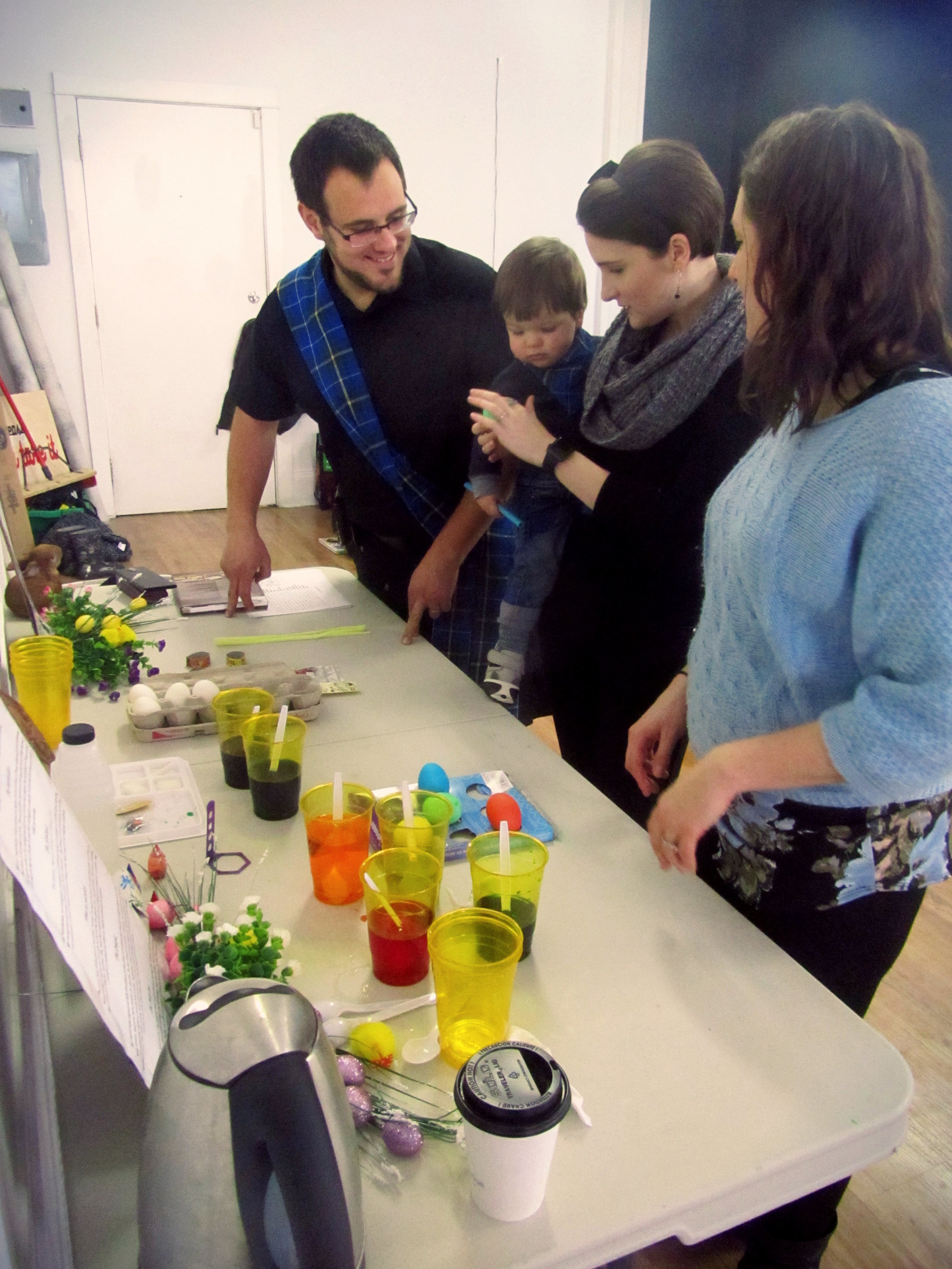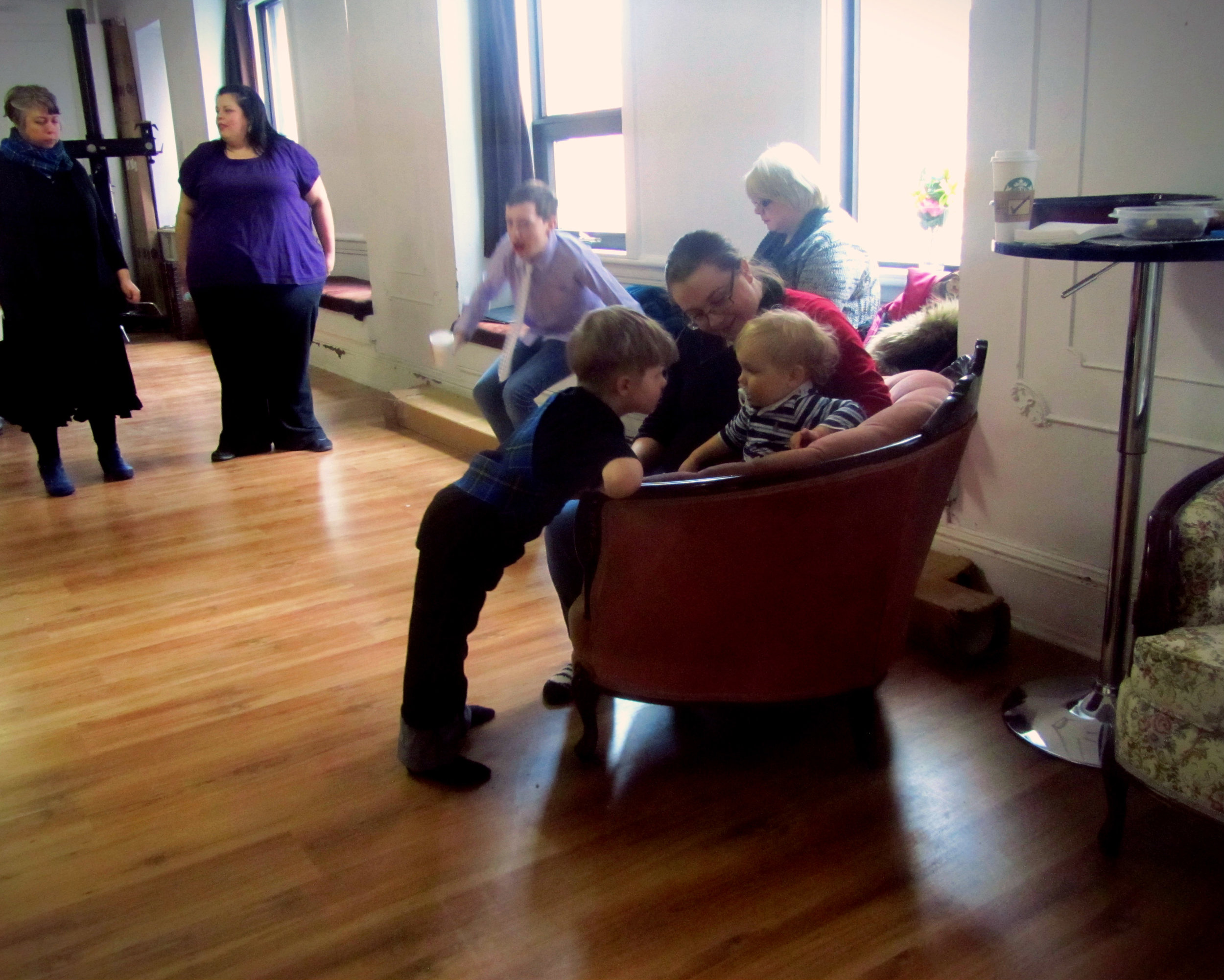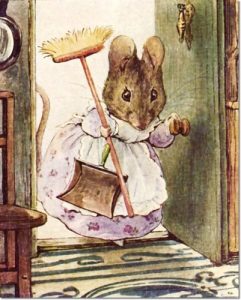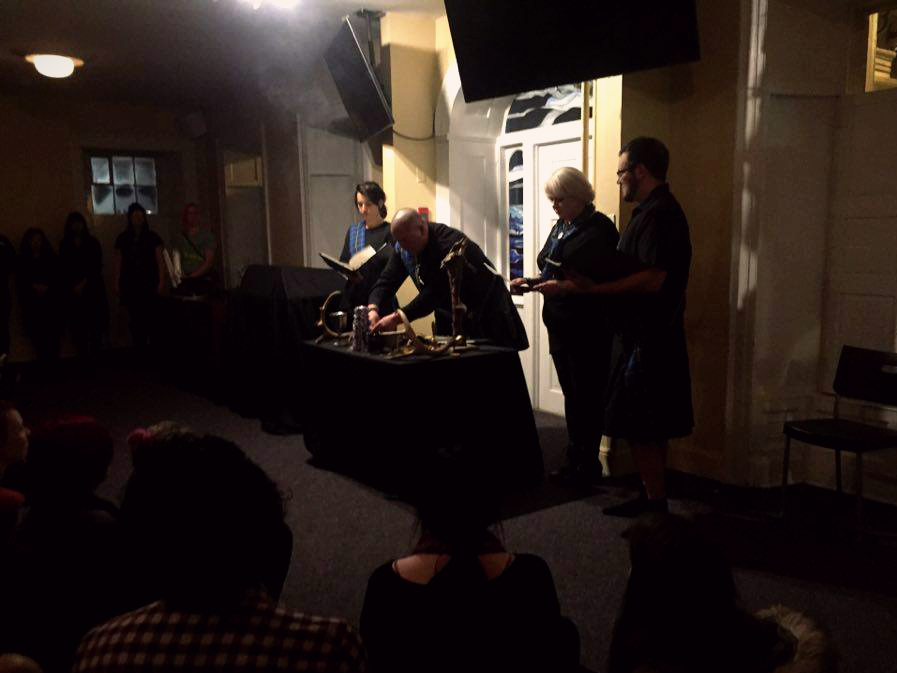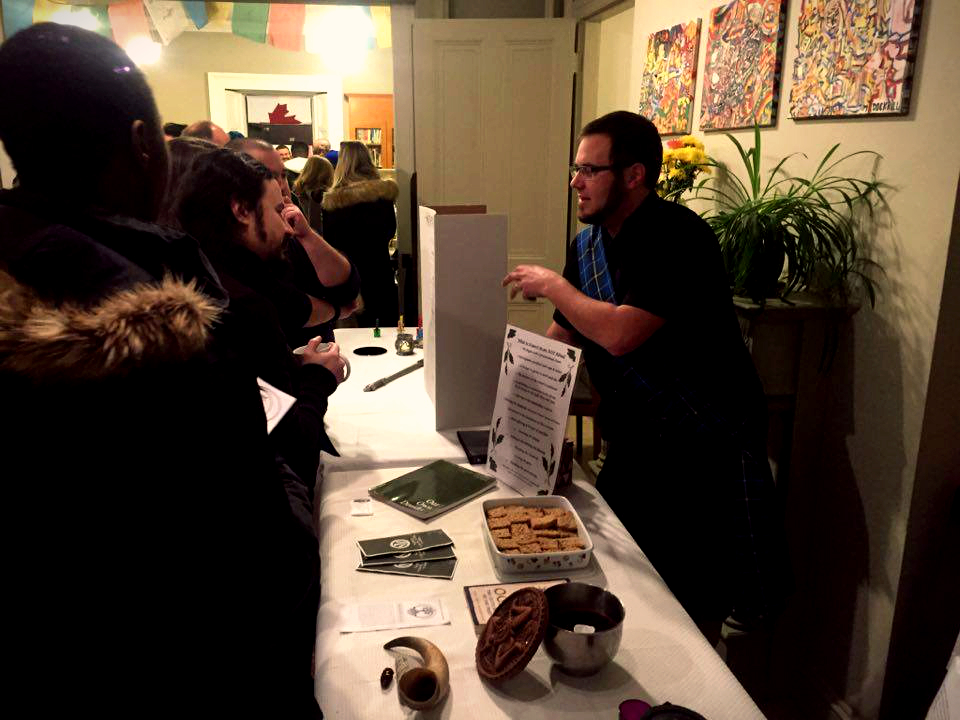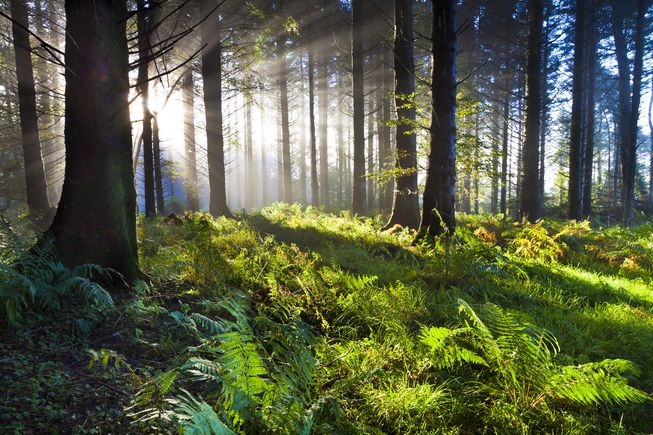
BLOG
Ogham weekly
Ogham (/ˈɒɡəm/;[4] Modern Irish [ˈoː(ə)mˠ]; Old Irish: ogam [ˈɔɣamˠ]) is an Early Medieval alphabet used primarily to write the early Irish language (in the "orthodox" inscriptions, 4th to 6th centuries AD), and later the Old Irish language (scholastic ogham, 6th to 9th centuries). There are roughly 400 surviving orthodox inscriptions on stone monuments throughout Ireland and western Britain, the bulk of which are in southern Munster.[5] The largest number outside Ireland are in Pembrokeshire, Wales.[6]
The vast majority of the inscriptions consist of personal names.
According to the High Medieval Bríatharogam, names of various trees can be ascribed to individual letters.
The etymology of the word ogam or ogham remains unclear. One possible origin is from the Irish og-úaim 'point-seam', referring to the seam made by the point of a sharp weapon.
The Ogham to us as druids is a tool we use for divination in a sense. We draw ogham from a small bag, crane bag, or what ever enclosure we may have with each of the ogham symbols having a different meaning. I am going to post weekly from this point on and cover each symbol in the ogham and their meaning and different ways we have interpreted it over various rituals and moments we have had. There are 24 in total, we use 25 so watch for 25 posts to come!
The Breaking of the Stick
Over the years I had seen a new tradition sort of creep up through the druid communities online and it piqued my interest. I had asked a fellow Canadian Druid Chelly Couvrette where this tradition came from and she directed me to a blog by Earrach of Pitsburg, The book of Sassafras.
Over the years, you may have seen me posting pictures like this on my blog or Facebook and, although some of you already may know the significance of this custom, some of you may not. "Custom?"... Yes, "The Breaking of the Stick" - - "but why do that? - Is it an ancient practice?"
My old article "The Power of the Impending Moment" sums up most of the idea here and introduces you to the tradition of the breaking of the stick at the sacred moment of the unique Earth/Sun relationship we pass through on every solstice and equinox. My idea of its core principle, the Sanctity/Veneration Feedback Loop, shows up in that article as well and in detail more recently in a post on this blog in November 2016.
"Ancient?" Although I first started this tradition in my own personal practice in the 1980's and incorporated it into my Grove Work in the 90's, I am not aware of a historical precedent for this ritualized action. This I'll assume is most possibly due to the fact that it was only recently that we have pocket timepieces that could with certainty mark a moment within the seconds of the minute of one's special moment de jour. I used to use the shortwave radio time signals from WWV at the Bureau of Standards in Ft.Collins CO - but nowadays, the times shown on anyone's cell-phone are reliably accurate to deep-down within the fractions of one single second. Yes, being within The Seconds of The Minute of the sacred event itself... that's what makes it especially powerful for me and the others who have adopted it or practices similar to it.
Yes, there it is, the imprint of the Sacred Moment, preserved in the broken ends of the stick, and clothed with all the import of that moment.
Its utility in your Rites of the Wheel? As is often the case, if your public rite is not held on the true day of the solstice or equinox, bringing the Broken Stick (wrapped/enshrined) to the rite and announcing its principle and importance before revealing it at the right moment, and then in the reception of the blessings, dipping the broken ends together into the Grail of the rite and using the wet ends to individually bless the Folk, that type of operation can potently bring Sacred Time and its spiritual inferences right down to a very personal level in our rites.
So, as it is that I've been doing this four times a year since the 1980's, yes, I've accumulated A Lot of Broken Sticks. In all that time I never have gotten around to doing the one cool thing I'd always mused on doing: binding the sets of sticks together on a wooden wheel or grapevine wreath to represent at least one whole solar cycle of The Wheel. Inevitably the new ones shove the older ones out of centrality on my shrine/altars - and, even with my fitful attempts to tag them, I've been consistently inconsistent to the point where I've not yet tagged and stored even one set of four to make a wheel. Yet I do treat the old ones with reverence and I have long had a special repository for them though: my Kiste ("Sacred Basket") of the Mysteries. Below you see me offering them from it into the Brushwood Nemeton Fire during my ordination to the ADF Druid Priesthood in May of 2002...
"Now all the knowledge of the heavens
pertinent to agriculture, standeth principally
upon three sorts of observations, to wit,
the rising of the fixed stars;
the setting of the same:
and the four cardinal points, to wit, of
the two tropics or sunsteads*,
and the double aequinox,
which divide the whole year into
foure quarters and notable seasons..."
Pliny the Elder (bk. xviii, chapter 25)
* Sunsteads: the December and June solstices
Together thankful
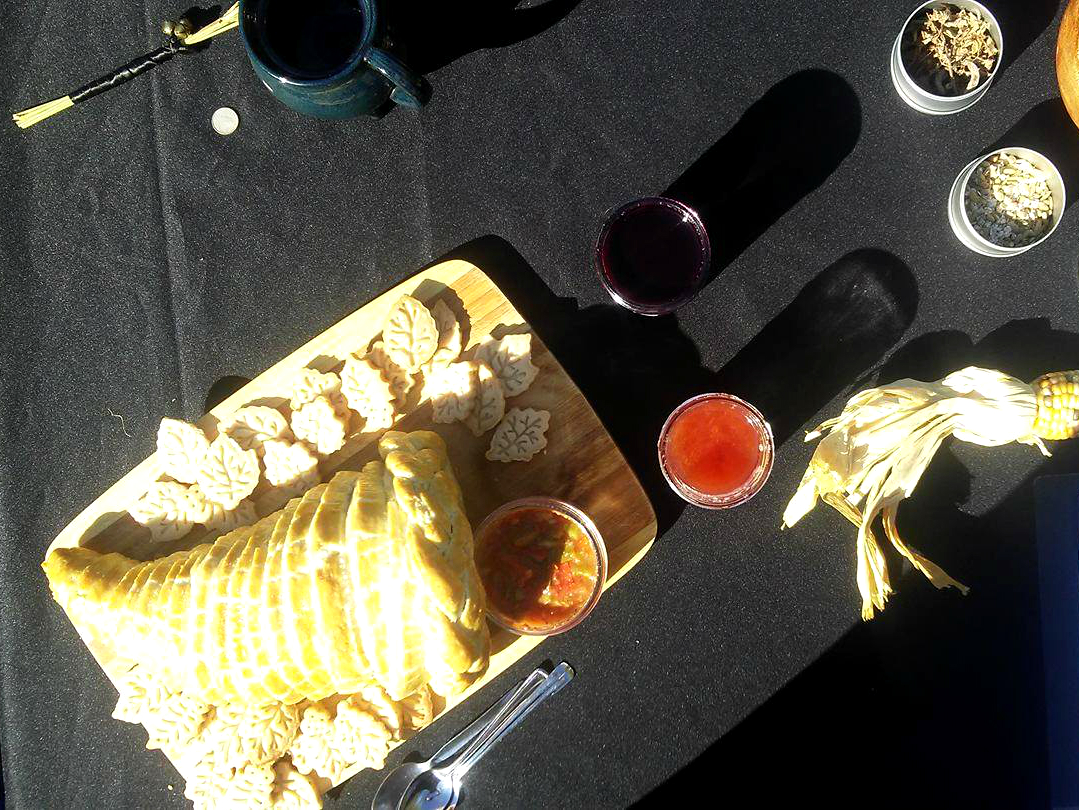
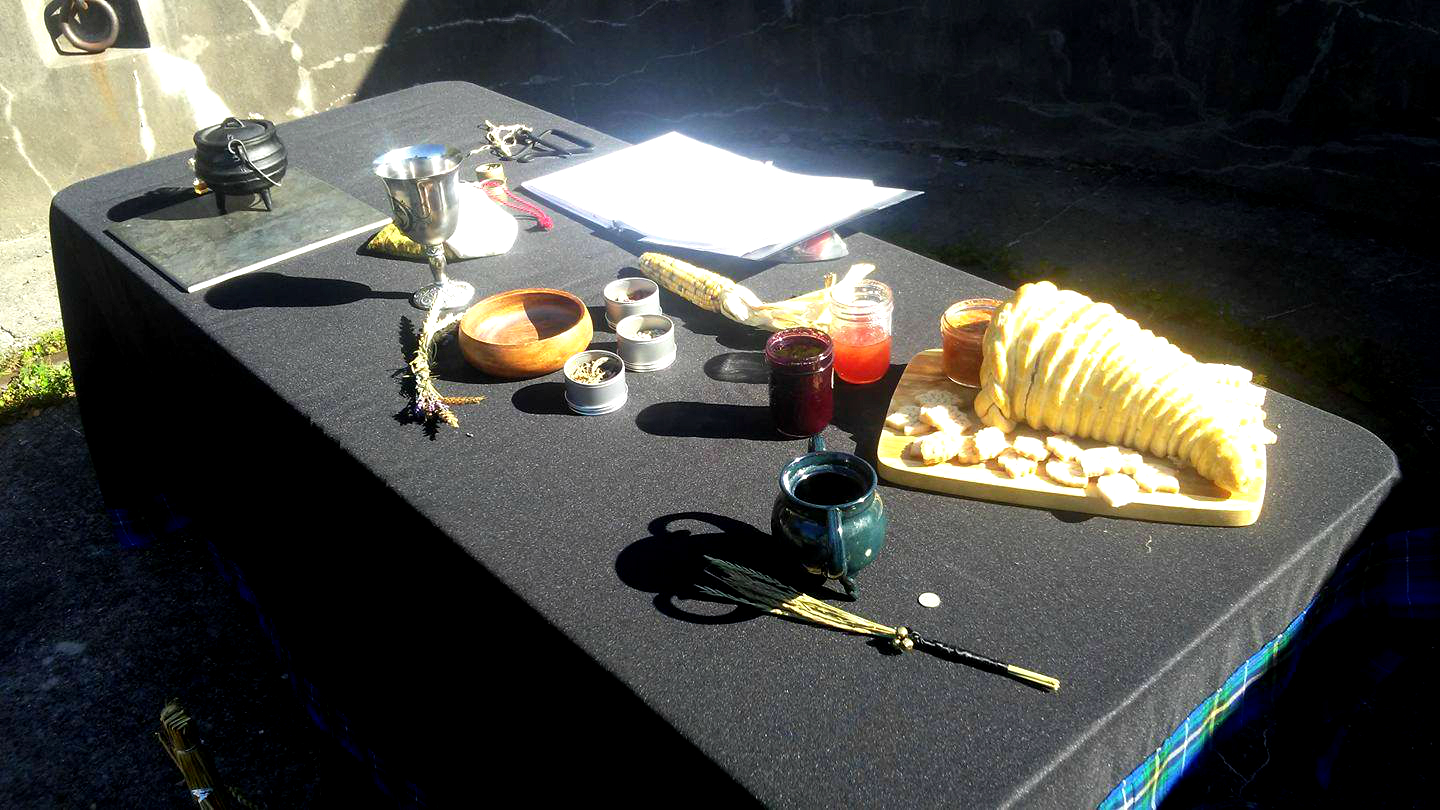
“Back at the time of Ostara, the Green Man emerged from sleep, cloaked in leaves, with vines sprouting from his beard. He was young and energetic and readily took up the plow and began his task of fertilizing the fields. By the time we arrived in August, to the celebration of Lughnasadh, the Green Man had been busy, and we graciously reaped the fruits of the first harvest.
At this second harvest, we rejoice once more in the bounty of the Earth and the fulfillment and reaping of our labours, both physically and spiritually. But with the changing of the foliage in the Green Man’s crown, we see that he has grown tired. We invite him to eat and drink with us, before sending him to rest while we prepare for the coming of winter.
Today we celebrate the Autumn Equinox, known to us by many names, amongst them the Mabon or Alban Elfed. At this time of balance, we give thanks to the waning sunlight for providing for us the means to be fed and full through the long cold days of winter, and take a moment to pay our respects to the impending darkness.
There is little evidence that Mabon was actually celebrated in Celtic countries, and all that is known of Anglo-Saxon customs of ancient times is that September was considered a “holy month”. The term “Mabon” came into existence in the 1970s, with the celebration since becoming part of our reconstructed Paganism. It is said that the druids honoured the Green Man, the God of the Forest, by offering libations to trees; however, this evening, following this ritual, we will instead break breads together, toast with homemade jams and spreads, and share in each others’ company. And we will be thankful for all that we have, have had, and will come to have in the future.“
—excerpt from our Mabon ritual, York Redoubt, Halifax
Blessed Mabon to everyone!
May your bellies be full, your nights warm, and your hearts complete.
xo
Practising Mindfulness
Summer Solstice

At the beginning of the month, a small group of us came together to cast away our stresses, relish the cool grass between our toes, and embrace the sun-warmed Earth. For the next few months, as the nights begin once again to lengthen and the shortening days are bright and full of life, we can be present and enjoy this rest before the harvests of Fall.
(It is also a good time for gathering herbs, for both magical and mundane purposes.)

It is a pagan custom to honor the dying God, as the sun reaches it’s peak and begins to wane. So we honoured the gods, the ancestors, and the spirits on this beautiful midsummer afternoon, and then we ate and we laughed and we enjoyed each others’ company.
And we wish for you all the loveliest of summers, filled with the juiciest of berries, the sunniest of days, the warmest of company, and the heartiest of laughs.
(And also s’mores. Because s’mores.)
-xo
Beltane Ritual
Beltane was a great time. We danced the may pole, shared delicious snacks, and had a wonderful ritual with Grove and friends.
During the ritual, we pulled two Oghams as usual and were met with the following: Blackthorn, which represents challenges, difficulty, and poison, followed by Yew, which represents access to ancestors, death, rebirth, and faith. Suffice to say, from great challenges come lessons, new life, and rebirth. We will embrace the challenges that are coming to us, knowing that the outcomes will be worth the efforts and struggle.
Good luck to you all with your Spring and Summer ventures and Blessed Beltane!
Celebrating the Renewal of Life
“The birds return from the southern lands, bearing spring time beneath their wings. Nature has awoken, seeds are sprouting, tree buds are bursting, the earliest plants are starting to fight their way from the frozen earth, and the birds and animals are preparing to have their young.“

“Ostara is the time when we recognize the importance of planting, growing, and nurturing new ideas, projects, plans, and plants, while seeking to maintain balance in our lives.“
This past weekend, our grove hosted our Ostara ritual. It was a lovely, happy, sugar-fueled, chaotic gathering, with kiddos running around left, right, and center. It’s amazing how in a few short years, our family has grown to include so many adorable little people, each bearing their own unique personalities, wonders, and curiosities. (And also trouble-making capabilities. Let’s not forget that one.)
As a grove, we have come to deeply cherish these young lives, the energies and the laughter they bring into our circle, and our rituals and our traditions are evolving into these family-friendly, kid-inclusive events, where we get to delight in each others’ accomplishments, in baby’s first steps; where we get to marvel at ever-growing vocabularies and unexpected insights; where we get to share stories and experiences and rejoice in each other as friends, as family, as human beings just living this beautiful life.
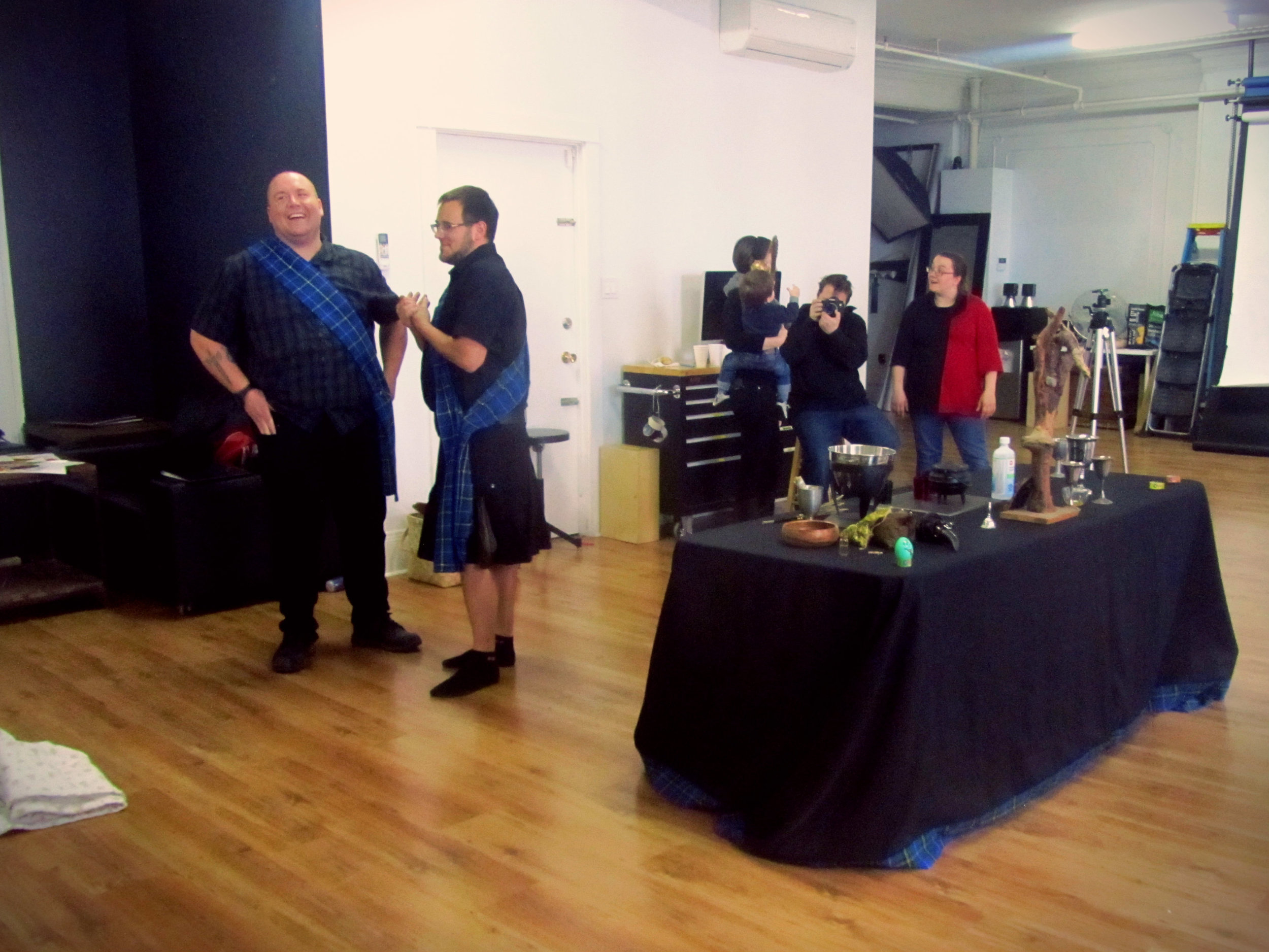
“The Spring Equinox allows us to step from the dark into the light half of the year and gives us the first signs of spring in the land.[... It] is a time of creativity, growth, and the seeing of new beginnings.“
Let us celebrate this renewal of life.
Let us breathe in the scents of new blossoms, feel the warmth of a new sun, and hear the songs of the earth below and the skies above.
And, in the spirit of Ostara, let us clean our houses, paint some eggs, and eat some chocolates.
Happy Ostara, from us to you!
xox
(All quotes are excerpts from the afternoon’s ritual.)
Spring Cleaning
Ritual is not only for the High Days. We have smaller life rituals that we perform each and every day: the ritual of brushing our teeth, the ritual of getting dressed, etc. With Ostara and Spring just around the corner, I thought it was time for some “Spring Cleaning” which, as with all things, is best done mindfully.
I love to clean, so there’s no issue for me there, but if you are not a fan of scrubbing things down and tidying up, maybe doing so mindfully will help you to achieve a greater sense of accomplishment and comfort.
The ritual of Spring Cleaning has existed since the dawn of time. In North America, it is typically done in response to the cold and wet climate we endure throughout winter. Traditionally, it would be a time to dust and air out the home, change the hay in bedding, and be rid of all things that accumulated in the home during the harsher months. Nowadays, it is mostly an excuse to give the house a good once-over and recycle things we no longer need.
So apart from the obvious aspects of cleaning, like removal of dust and debris, cleaning surfaces or carpets, and laundering things that may get forgotten, we should keep in mind a few things:
- Firstly, you must perform each task with a strong sense of intent. Focus your energy on removing not only the physical mess but the emotional and spiritual mess as well. Visualize your home filling with a bright light as you cleanse it.
- When performing a ritual, it is best not to use harsh chemicals, if they can be avoided. Try a natural brand or even making your own cleaning solution with vinegar, water and essential oils to give the house a fresh smell without the burning compounds. (Check out for DIY natural cleaning inspiration here, here, and here!)
- Clean from top to bottom and from the back of the house out the front door.
- Burn sage in order to cleanse and purify the air.
- Open your most Easterly windows to allow the energy of the sun to pour in.
Good luck, folks!
(Check out our “Spring Cleaning” post from 2015, including a “House Cleaning Ritual” document, here)
Imbolc 2017
“Now is the time of stirring, when the earth begins to soften and the waters to flow. While frost still bites and winds blow, and the light is growing stronger, and life begins to wake.“

“Imbolc is the day that we celebrate the passing of Winter and make way for Spring. It is the day we honour the rebirth of the Sun. It is also a day of celebrating the Celtic Goddess Brigid. [...] This is a time for communing with her, and tending the light of her sacred flame. At this time of year, we will light multiple candles or lanterns to remind us of the passing of Winter and the entrance into Spring, the time of the Sun.“
This past weekend, we joined the Pagan Presence Committee in the celebration of Imbolc as part of the 2017 Interfaith Harmony Week, a week which sees groups of multiple and diverse religions, faiths, and spiritualities open their doors to the public, inviting anyone interested in learning about and experiencing various traditions.
The evening opened with our Grove hosting a ritual, and followed with a “meet & greet”, where attendees got to explore a number of pagan tables and ask questions about the different paths and denominations. Snacks (including a chocolate fountain!! —yes, too exciting not to mention) were shared, and wonderful conversations were had. It was a lovely event, and we were pleased to be a part of it.
Happy Imbolc, everyone! <3
(All quotes are excerpts from the evening’s ritual, and photocred goes to Karen.)
Imbolc 2017 & World Interfaith Harmony Week
We are happy to announce that we will be conducting our 2017 Imbolc ritual as a part of Halifax’s World Interfaith Harmony Week, in conjunction with the Earth Spirit Society of Nova Scotia (ESSNS), on Saturday, February 4th.
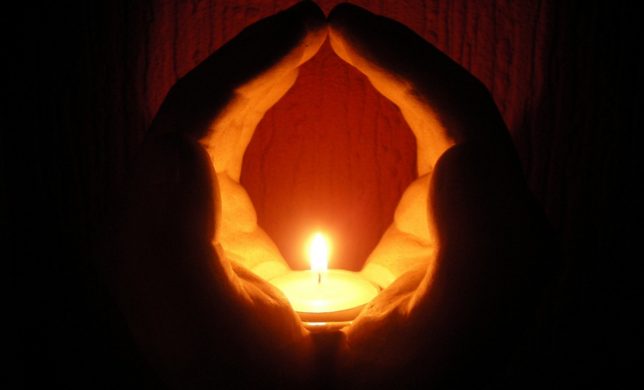
The ritual will take place in south end Halifax, at the Universalist Unitarian Church (5500 Inglis Street), and will be followed by a “meet & greet” where various pagan organizations in the city will have displays and information about their traditions
Doors open at 6:30pm, and the ritual (with an opening welcome statement and introduction) will begin promptly at 7:00pm.
Thanks to the hard work of the Pagan Presence Committee and ESSNS, the Pagan community has had an increasing involvement with interfaith in Halifax, and the Grove of Nova Scotia Druids is happy to be a part of it again this year.
For more information about Interfaith Harmony Halifax, visit: http://ihhalifax.ca/home/
For copy of the 2017 event guide, including all the events put on by different faith groups click here.





